SUMMARY
This is AI generated summarization, which may have errors. For context, always refer to the full article.
![[ANALYSIS] GCQ reversion throws caution to the wind](https://www.rappler.com/tachyon/2020/08/tl-gcq-reversion.jpg)
With the country in technical recession, record-high unemployment at 27.3-M jobless adult Filipinos, and 79% of the population saying they are worse off in the last 12 months, the decision to revert back to general community quarantine from a stricter measure was a trade-off to “reboot” the economy and “refresh” the confidence of markets for an early rebound.
Credit ratings agencies were quick to raise the alarm bells when President Duterte imposed a two-week modified GCQ. It came at a time when the Philippine economy contracted by 16.5% in the second quarter with lost outputs of at least P820-B and first semester contraction of 9% or around a P1.3-T.
Government has been able to raise substantial funds but has taken on a very cautious spending policy, with P900-B funds on standby. It rejected calls for a P1.3-T stimulus measure for small businesses and wage subsidies, opting instead for a stingy P160-B Bayanihan 2 package.
This record-high unemployment at 45.5% of adult Filipinos did not happen just because of COVID-19. If we contrast it with a national poll recently that found 79% of Filipinos saying their quality of life worsened in the last 12 months, it shows that prior to COVID-19, Filipinos’ lives were already miserable under Duterte.
Reverting back to GCQ is like having a gun pointed at our forehead, waiting for a finger to pull the trigger. It will be pulled if all the well-laid plans aren’t backed by a discerning and compassionate leadership.
Throwing caution to the wind
While the IATF has announced that testing, tracing, and treatment is being ramped up through the One-COVID-Referral Network, that the Health Technology Assessment Council is strengthening their science-based approach, and that behavioral changes through a Bida ang Disiplina campaign are being called for, this will all fall short with bad leadership and governance. Even local governments see the need for stricter protocols if we revert to GCQ.
The Health Professionals Alliance Against COVID-19, in a presser on August 18, stated that after a two-week “timeout” or a call to sit down and plan collaboratively, they would rate the government’s response to their recommendations as 8 out of 10. According to Dr. Aileen Espina, “Dapat magkaagapay ang buhay at kabuhayan,” avoiding the dichotomy about saving lives or the economy. However, the biggest alliance of health professionals stressed caution and would closely monitor implementation of their suggestions.
But the rising COVID-19 cases during GCQ starting June was a sure sign that vulnerable communities can’t cope with a prolonged health crisis with extremely limited resources. Without appropriate and timely government support, families would die without food, proper health care, and safe job environments.
Government though was quick to point out that behavior change, not structural changes, has been identified as the culprit for a rise in COVID-19 infections. Filipinos are said to put their guards down during less stringent lockdown measures in work and at home. But reports of top officials not following protocols of social distancing and holding “mañanitas” aren’t helping people to follow.
Also on its part, the DOH said they don’t have contact tracers and leaves it to the LGUs and communities to do the tracing, using personal diaries if one observes symptoms. Self-isolation and quarantine by individuals are encouraged. The DTI consistently has pushed for GCQ with health protocols but clarified that under the guidelines contained in Joint Memorandum Circular 20-04-A of the DTI and DOLE, testing is not required for businesses.
Public transportation will be resumed, with contracting of routes paid per trip rather that on passenger volume and health protocols, and addressing crowding of commuters waiting for their rides. Checkpoints would be random and wearing of face masks and shields would be strictly implemented.
The two-week lull for a sit-down talk called by medical frontliners doesn’t mean all issues have been addressed and we are ready to go back to a relaxed lockdown, with the announced protocols in place. It’s like throwing caution to the wind, knowing the risks are high and still gambling everything.
Paddle-less banca in a storm
Prior to the two-week MECQ announced last August 2, BSP governor Diokno confidently said that the country was well on the way to a “swoosh” recovery. That swoosh might be a W-shape recovery as there is still no vaccine. The W-shape happens when we go into a forced recovery and just do the same things all over again.
While the BSP has flooded the financial system with cash and lowered interest rates, its “dance partner” on the fiscal side has been unwilling to ramp up spending. Financial analysts and economists are looking for a substantial fiscal rescue effort to spearhead the economic recovery, not a stingy one. A support package with a size similar to what other ASEAN countries is putting is what is needed.
But Finance Secretary Dominguez made it clear that “whatever stimulus package we have, it has to be affordable” and that we should “keep our powder dry for next year as well,” as he recognized that this COVID virus won’t be eliminated by the end of this year.
Instead, Dominguez is pushing for lowering corporate income taxes as an indirect stimulus. However, with global investments going down and most domestic firms unwilling to expand due to high risks, such policy would instead lower revenues. Besides, reducing corporate taxes has become a race to the bottom for many countries to attract investments.
In short, government’s message is that businesses and the economy has to survive on their own, with no financial stimulus other than fiscal incentives of proposed reduced corporate taxes and very low interest rates.
Duterte’s economic team is hinging their hopes on relaxed quarantine measures to increase manufacturing output, capital formation through an uptick of construction activities, and increase in consumer spending for the fourth quarter.
This economy policy in a pandemic crisis is like government asking business to sail out in a storm in a banca without a paddle.
Lack of jobs, bleak future
Unemployment, however, is persistent and the jobs market is bleaker. While COVID-19 exacerbated unemployment, it was already a ticking time bomb. Of those who said their lives worsened in the past 12 months, an overwhelming majority, at 84%, said they had no job or livelihood at the time of the interview.
While unemployment rose in all adult age groups, those bracketed among the 18 to 24-year-olds were the most jobless as compared to others. High youth unemployment means no jobs are available or suitable to them, a clear indication of persistent “jobless growth.”
The joblessness rate among the youth aged 15-24 is likely to hit as high as 19.5% by yearend if COVID-19 is contained within 6 months, resulting in P1.02 million in job losses, the Asian Development Bank and ILO reported recently.
Spokesperson Harry Roque’s “gleefully welcoming” the news that only 45% instead of 100% Filipinos are jobless is highly insensitive. Such non-discerning and uncompassionate remarks pull the trigger instead of saving lives of people who are physically and mentally in turmoil.
Meanwhile, 8 in 10 Filipinos surveyed believe their lives got worse in the past 12 months. According to the latest Social Weather Stations (SWS) mobile phone survey, 79% of Filipino adults say that their quality of life worsened compared to a year ago.
With investments going down, tourism in a slump, remittances dropping, and weak global trade (thus high balance of payments, as we are not spending dollars nor earning), and a peso at P48:$1:00 (less money for OFWs, exports becoming cheaper), the push is for government to spend more but efficiently (read: don’t steal it) to keep the economy afloat and let people survive.
As the country comes to this critical crossroads, we have President Duterte in “perpetual isolation” in his hometown. When people badly need a leader to emulate, he emasculates in the face of a persistent foe. – Rappler.com
Tom Villarin is former congressman of Akbayan Party List in the 17th Congress. He authored the law Institutionalizing the 4Ps and the Safe Spaces Act, co-authored the Universal Health Care Law, Expanded Maternity Leave Law, Free Tertiary Education in Public Schools, and the vetoed Anti-Contractualization Law, among others.
Add a comment
How does this make you feel?
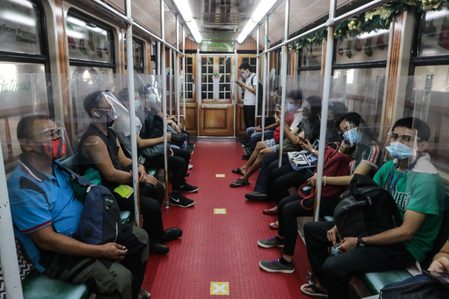
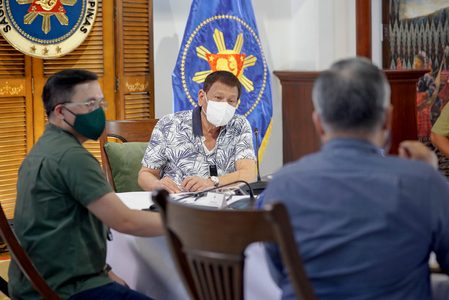
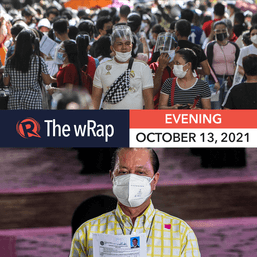


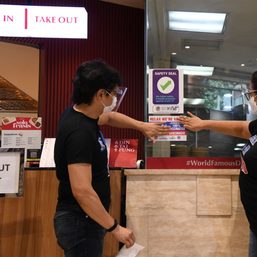
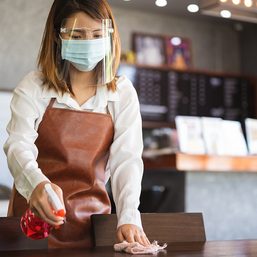
![[ANALYSIS] A new advocacy in race to financial literacy](https://www.rappler.com/tachyon/2024/04/advocacy-race-financial-literacy-April-19-2024.jpg?resize=257%2C257&crop_strategy=attention)


![[In This Economy] Can the PH become an upper-middle income country within this lifetime?](https://www.rappler.com/tachyon/2024/04/tl-ph-upper-income-country-04052024.jpg?resize=257%2C257&crop=295px%2C0px%2C720px%2C720px)

There are no comments yet. Add your comment to start the conversation.